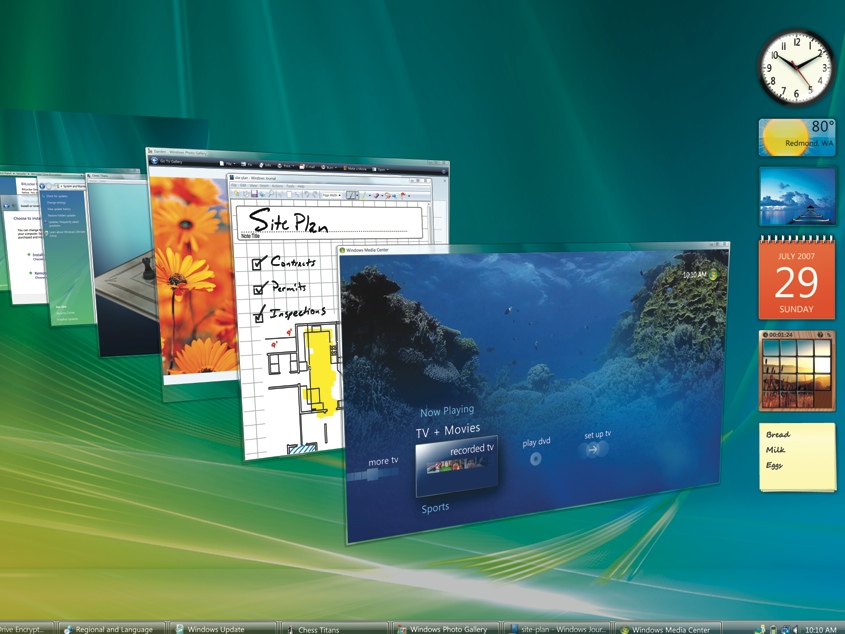Top 10 tech irritations
This stuff should work by now! TechRadar takes some common technology to task

As technology fans, we have to put up with crushing bouts of disappointment on a regular basis. If the iPhone 3G launch proved anything it's that speculation about what the next iPhone might be like eclipsed what we actually got – a minor hardware refresh.
We dare to dream of a brighter, all-digital tomorrow; of intuitive gadgetry and seamless interconnected systems. But modern-day technology often doesn't live up to this rose-tinted futurama. In fact, technology can be downright bloody irritating – overcomplicated, often underpowered or poorly built. All of which set us thinking... what are those 21st century technologies that get us all riled up to the point of near-violence? Consider the following...
1. Microsoft Windows
Just the thought of Microsoft Windows is enough to send Mac users scurrying for cover. It's the OS we love to hate – bloated, labyrinthine and, like the leaning tower of Pisa, liable to fall over at any moment.
Windows is an OS that fights you all the way. Over time, layers of downloaded patches fatten the install. Lengthening queues of half-hidden system processes hog memory resources.
Type 'Windows problems' into Google and you'll see that Windows has spawned a cottage industry of PC troubleshooters – registry cleaners, disk defraggers and system tuners. If Microsoft ever produces an OS that actually works properly, hundreds of small companies will go to the wall.
2. Microsoft Windows Mobile
Sign up for breaking news, reviews, opinion, top tech deals, and more.
A mobile version of Windows should be a winner. Or at least pretty to look at. But the Windows Mobile OS is so needlessly overcomplicated, it actually makes a mobile phone more difficult to use.
Windows Mobile is undeniably flexible and its Office compatibility is great for business. But this is an OS that rarely anticipates what you want to do. Instead, you have to wade through sub-menus (and sub-menus of the sub-menus) to turn options on and off.
The shocking state of the Windows Mobile UI has been thrown into sharp relief by the iPhone. One is slick, quick and pleasantly intelligent. The other is messy, sluggish and infuriatingly fiddly. This year Windows Mobile has ruined the HTC Touch Diamond for us and surely scuppered Sony Ericsson's Xperia X1. Windows Mobile 7 can't arrive soon enough.
3. The Zune
OK, so Microsoft is an easy target. But the Zune frustrates the hell out of us. Mostly because Microsoft had the chance to take on Apple in the MP3 player market and provide a credible, Windows-based alternative to the iPod.
All Microsoft had to do was match Apple's iPod touch feature-for-feature – a touchscreen, Wi-Fi, audio/video playback, 32GB of flash memory, all shoehorned into some sort of slim lust-lozenge.
But to really take on the iPod, the Zune needed to have something that the iPod didn't have. Something extra. Something special. Not an FM radio and a voice recorder. But something to really get the Zune noticed – a Skype client, maybe, integrated IM or Xbox Live-style arcade games.
Instead, what we (or rather the US) got was a variant of the Toshiba Gigabeat and some limited song squirting. Microsoft missed a trick here. Big time.
4. Rechargeable batteries
Most technologies seem to have dramatically improved over the years apart from rechargeable battery cells. Did you know that the first commercial Lithium-Ion battery was released by Sony in 1991. It was the same year that Apple released the PowerBook 100, which had a 16MHz processor, a 9-inch monochrome display and an 80MB HDD.
It's telling that battery technology hasn't changed significantly since. In comparison, we now have quad-core CPUs, high-definition colour displays and half-terabyte disk drives.
It's annoying, because we rely on rechargeable batteries to juice up our must-have gadgets – our mobile phones, iPods, portable video players, sat-nav systems, radios, Wii remotes and so on. Scientists continue to minutely tweak the chemical composition of Li-Ion cells. But small increases in battery life are typically achieved by reducing the power consumption of other, greedier components.